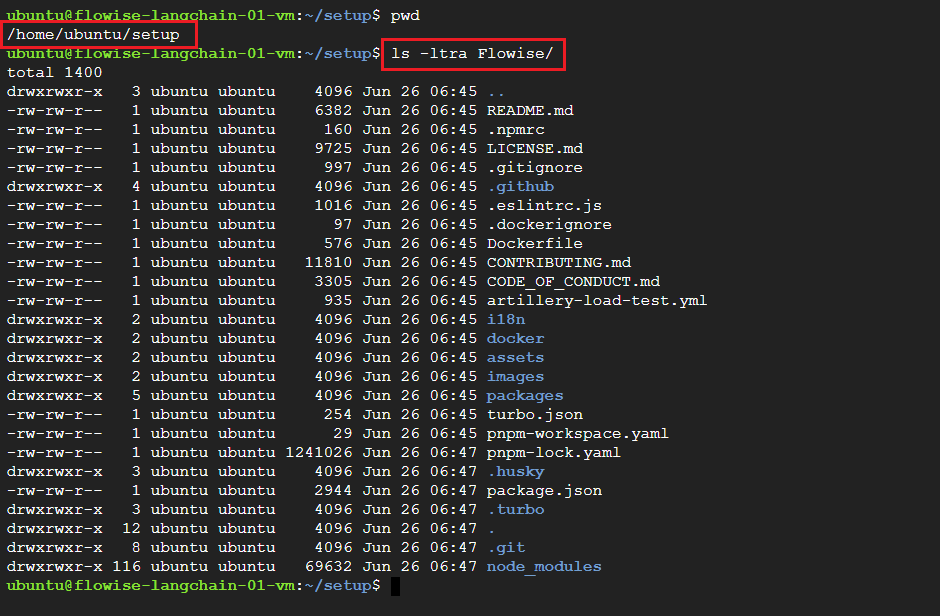Setup and installation of 'Flowise & LangChain' on GCP
This section describes how to provision and connect to No-Code LLM & AI Development using LangChain & Flowise VM solution on GCP.
-
Open No-Code LLM & AI Development using LangChain & Flowise listing on GCP Marketplace
-
Click Get Started.

It will ask you to enable the API’s if they are not enabled already for your account. Please click on enable as shown in the screenshot.
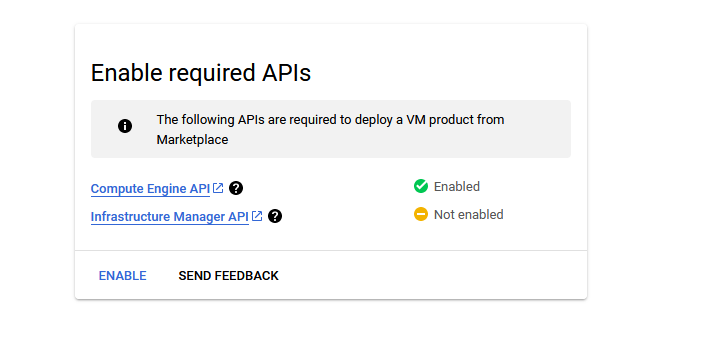
-
It will take you to the agreement page. On this page, you can change the project from the project selector on top navigator bar as shown in the below screenshot.
-
Accept the Terms and agreements by ticking the checkbox and clicking on the AGREE button.
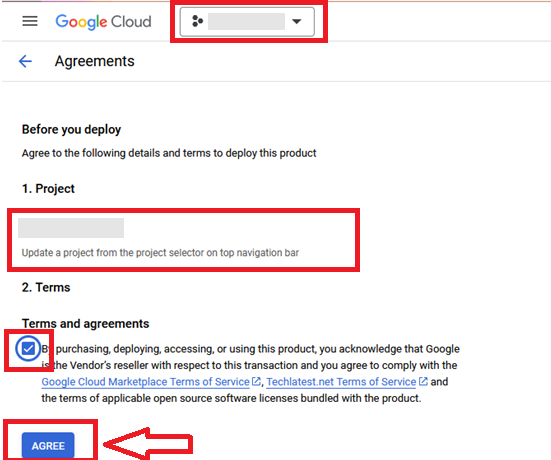
-
It will show you the successfully agreed popup page. Click on Deploy.
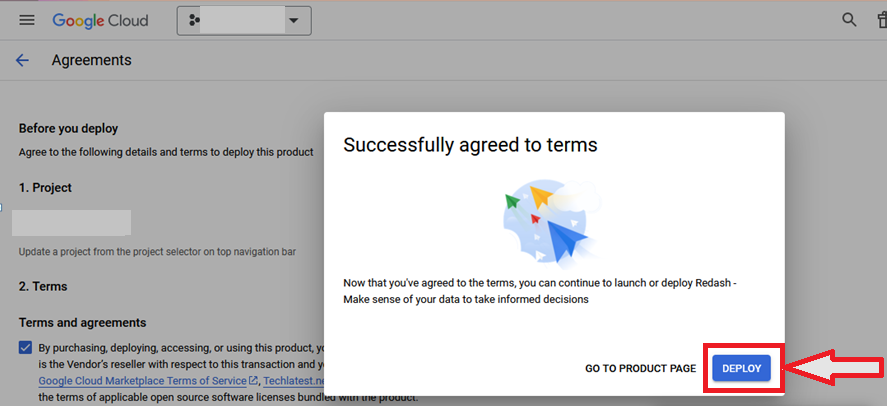
-
On deployment page, give a name to your deployment.
- In Deployment Service Account section, click on Existing radio button and Choose a service account from the Select a Service Account dropdown.
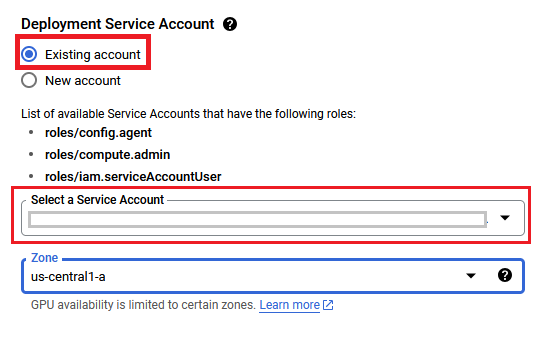
- If you don't see any service account in dropdown, then change the radio button to New Account and create the new service account here.
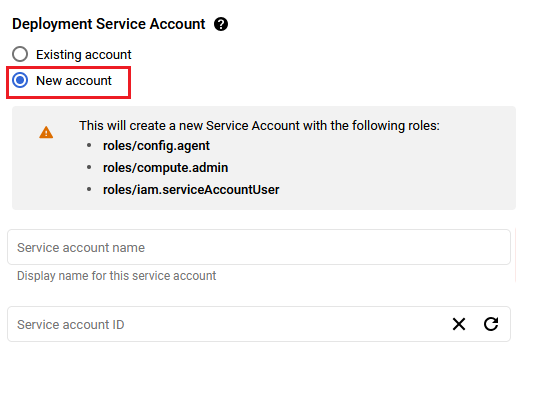
- If after selecting New Account option, you get below permission error message then please reach out to your GCP admin to create service account by following Step by step guide to create GCP Service Account and then refresh this deployment page once the service account is created, it should be available in the dropdown.
You are missing resourcemanager.projects.setIamPolicy permission, which is needed to set the required roles on the created Service Account
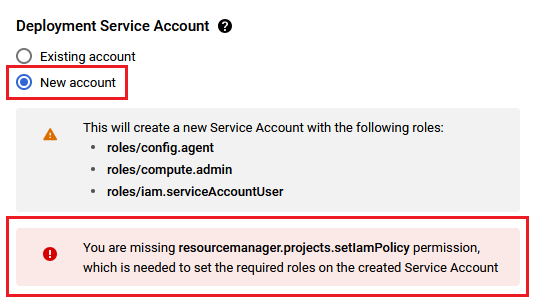
- Select a zone where you want to launch the VM(such as us-east1-a)
- Optionally change the number of cores and amount of memory. ( This defaults to 2 vCPUs and 7.5 GB ram)
- Optionally change the boot disk type and size. (This defaults to ‘Standard Persistent Disk’ and 20 GB respectively)
- Optionally change the network name and subnetwork names. Be sure that whichever network you specify has ports 22 (for ssh), 3389 (for RDP) , 80 (for HTTP) and 443 (for HTTPS) exposed.
- Click Deploy when you are done.
- No-Code LLM & AI Development using LangChain & Flowise will begin deploying.
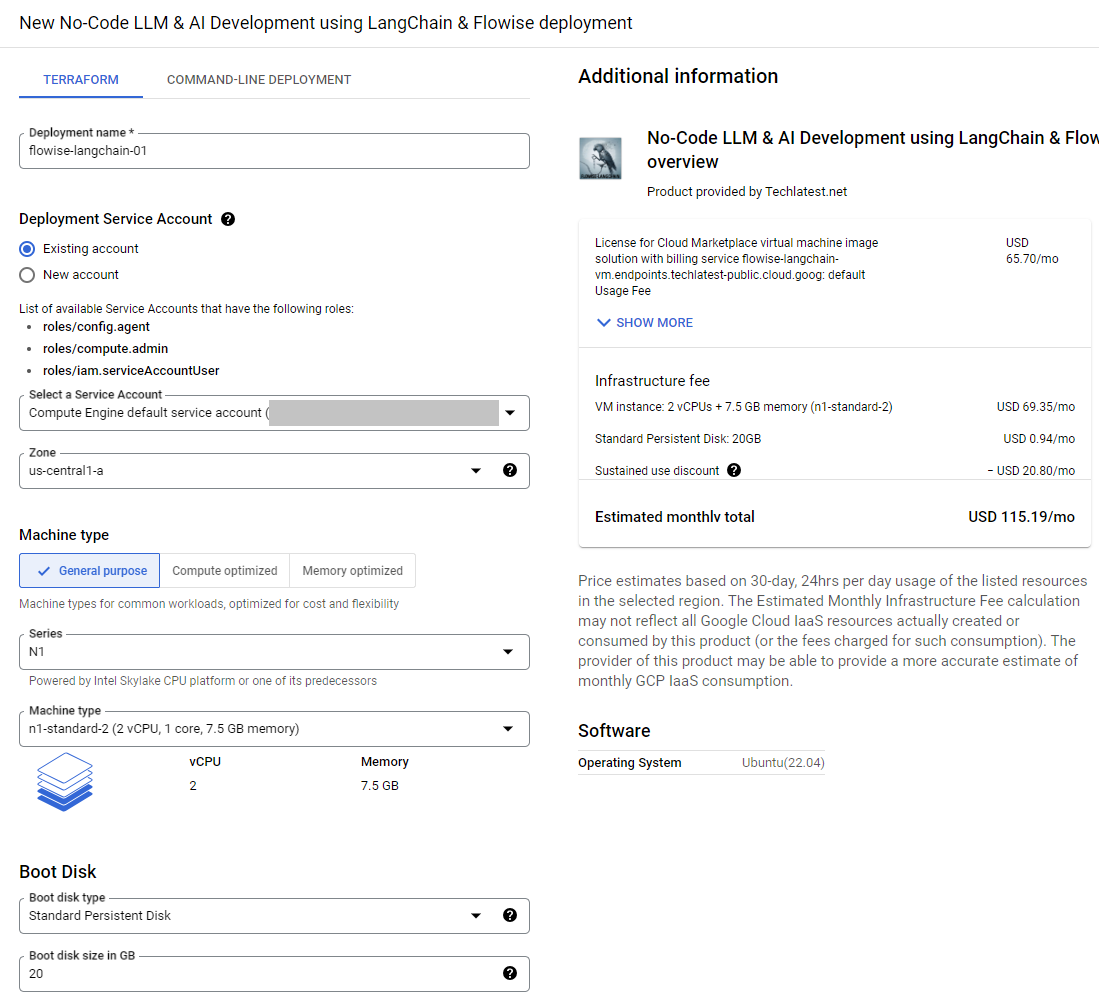
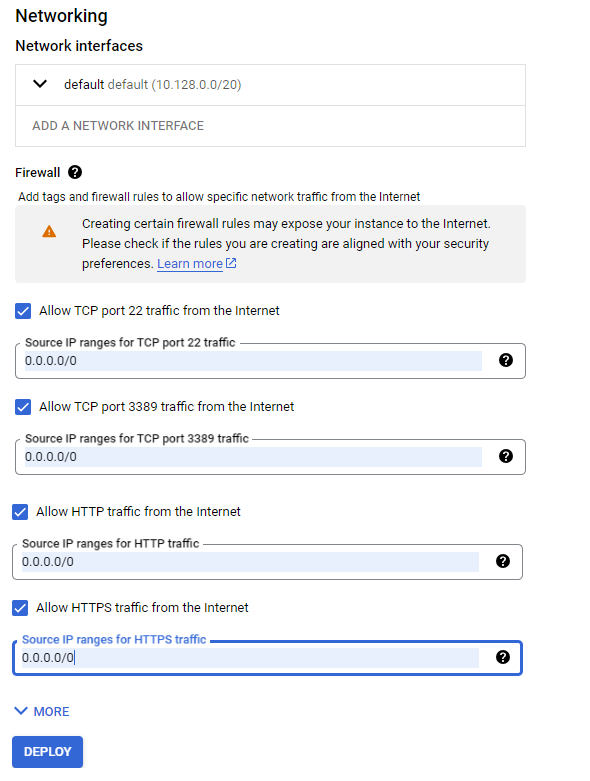
-
A summary page displays when the compute engine is successfully deployed. Click on the Instance link to go to the instance page .
-
On the instance page, click on the “SSH” button, select “Open in browser window”.
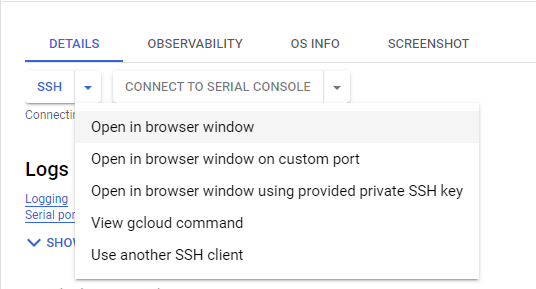
- This will open SSH window in a browser.
- Run below command to set the password for “ubuntu” user

-
Now the password for ubuntu user is set, you can connect to the VM’s desktop environment from any local windows machine using RDP or linux machine using Remmina.
-
To connect using RDP via Windows machine, first note the external IP of the VM from VM details page as highlighted below

-
Then From your local windows machine, goto “start” menu, in the search box type and select “Remote desktop connection”
-
In the “Remote Desktop connection” wizard, paste the external ip and click connect

- This will connect you to the VM’s desktop environment. Provide “ubuntu” as the userid and the password set in step 6 to authenticate. Click OK
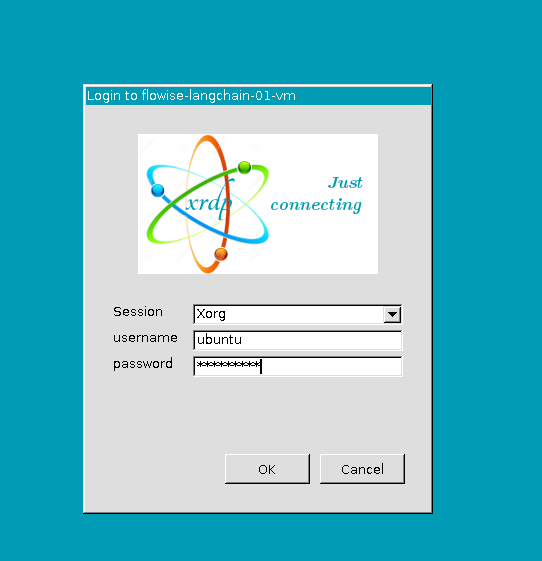
- Now you are connected to out of box No-Code LLM & AI Development using LangChain & Flowise environment via Windows machines.
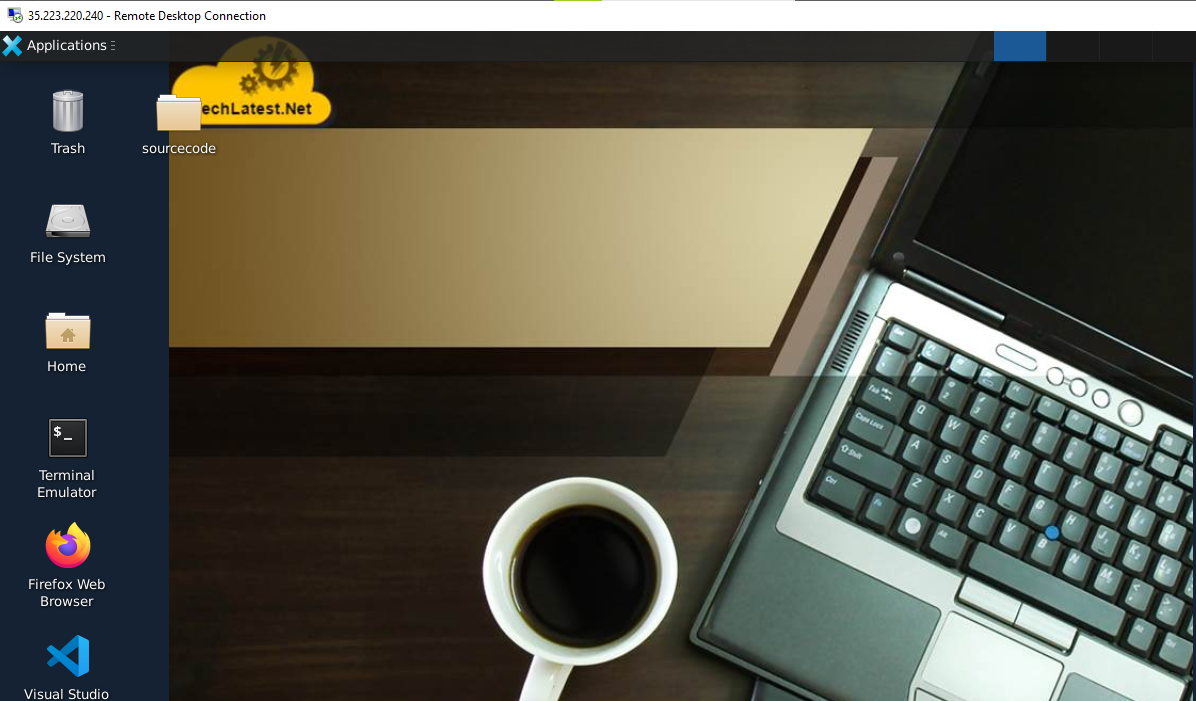
-
To connect using RDP via Linux machine, first note the external IP of the VM from VM details page,then from your local Linux machine, goto menu, in the search box type and select “Remmina”.
Note: If you don’t have Remmina installed on your Linux machine, firstInstall Remmina as per your linux distribution.
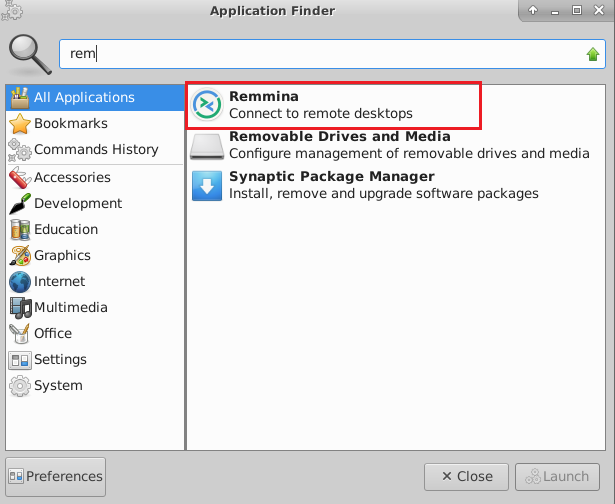
- In the “Remmina Remote Desktop Client” wizard, select the RDP option from dropdown and paste the external ip and click enter.
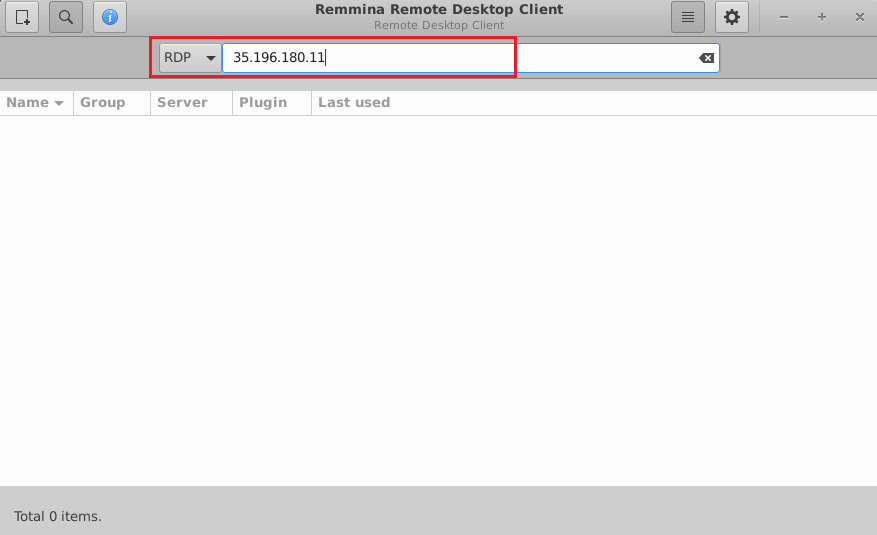
- This will connect you to the VM’s desktop environment. Provide “ubuntu” as the userid and the password set in step 6 to authenticate. Click OK
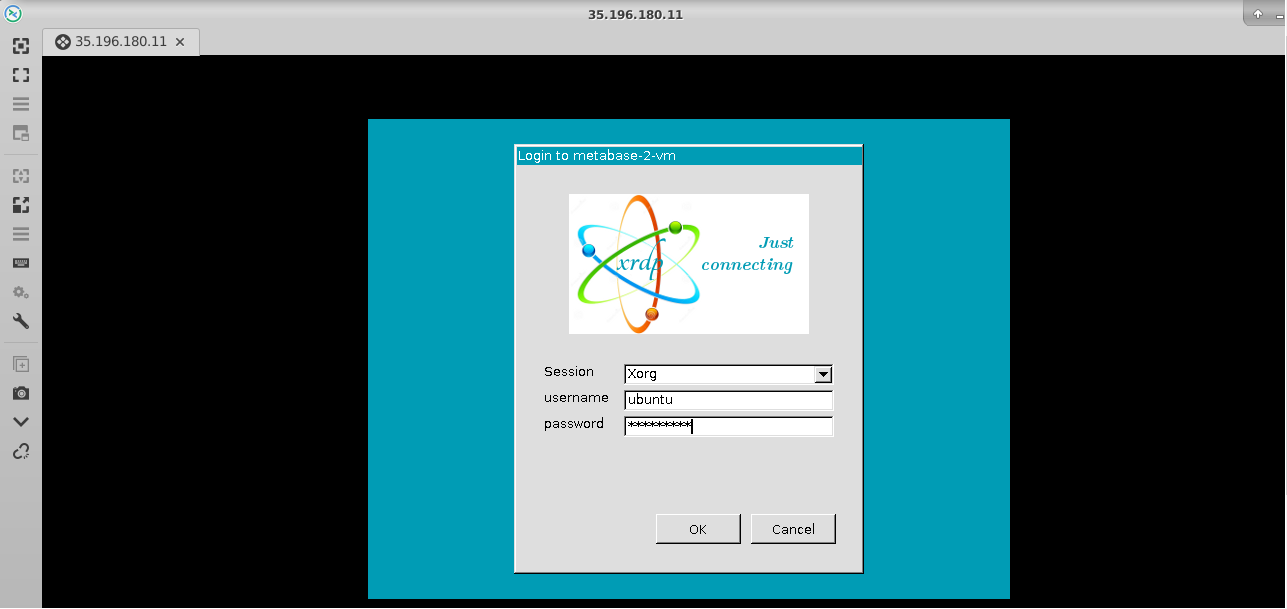
- Now you are connected to out of box No-Code LLM & AI Development using LangChain & Flowise environment via Linux machine.

- To access the Flowise User interface, copy the public IP of the VM and paste it in the Browser. Hit enter.
Accept the security warning. Create new admin account on this registration page.
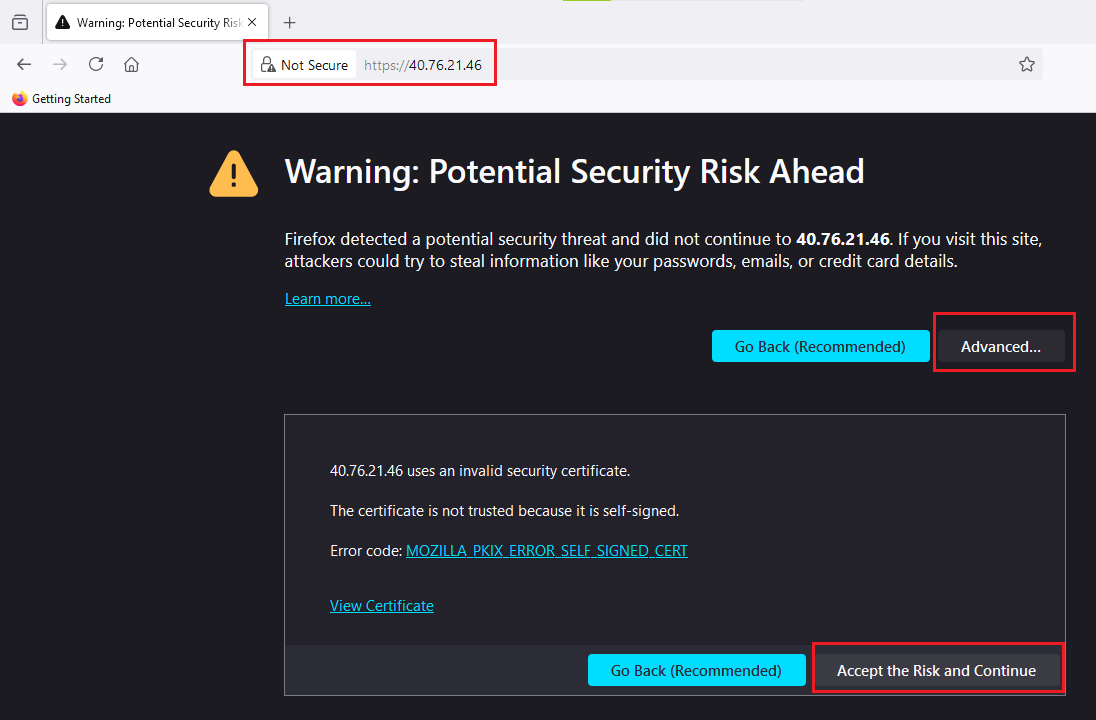
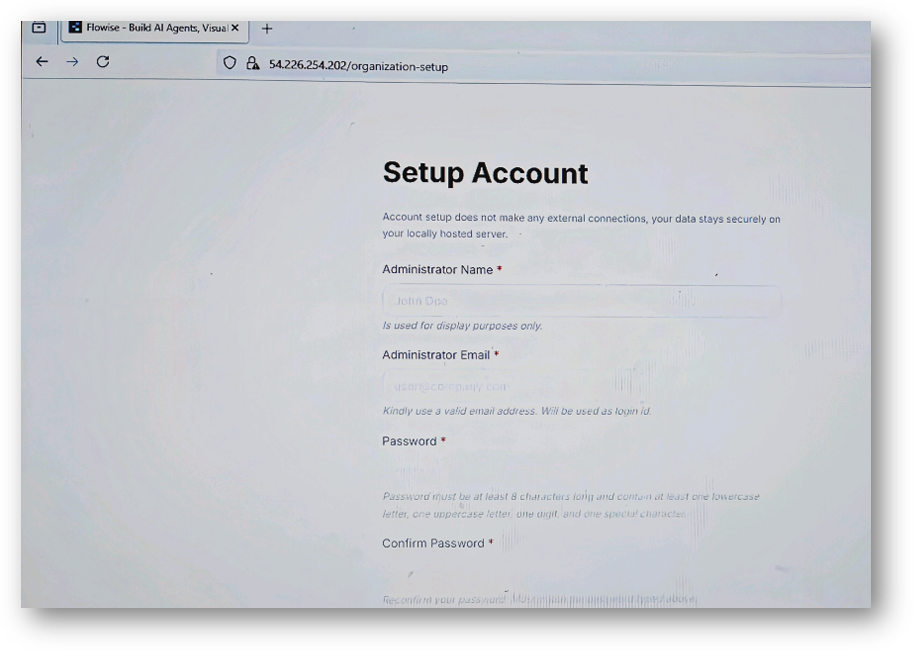
- Here you have your your Flowise UI available to you.
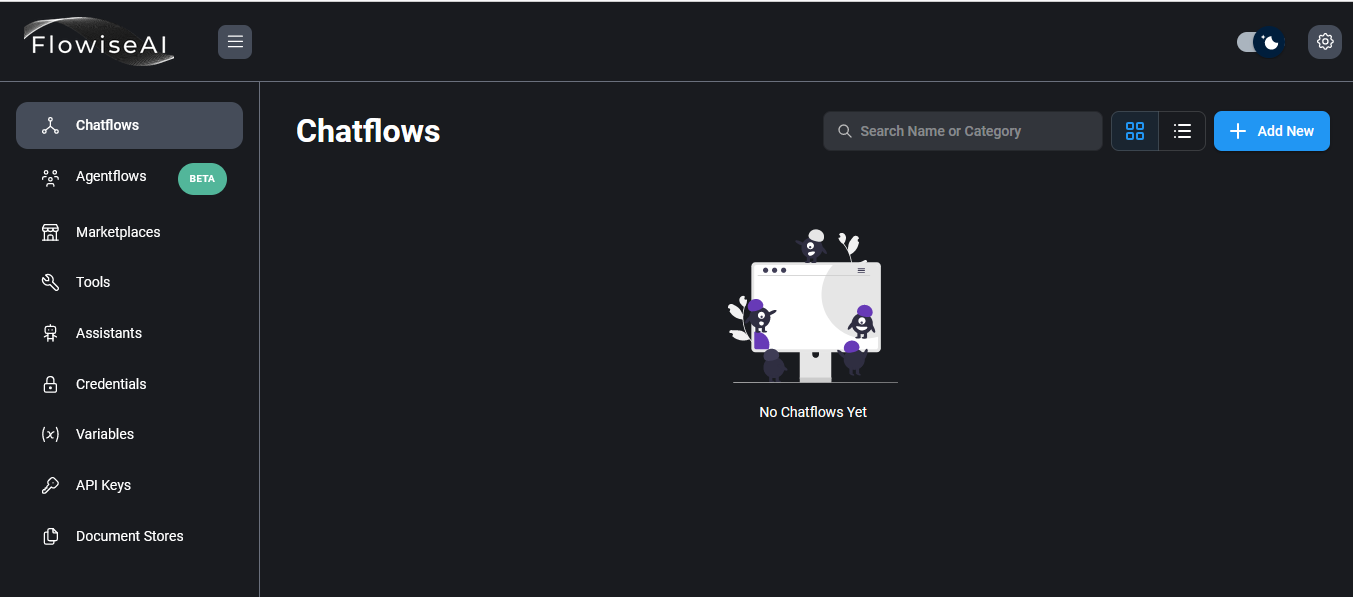
- You can create the new API key by navigating to API Keys from left pane and clicking on the Create Key button.
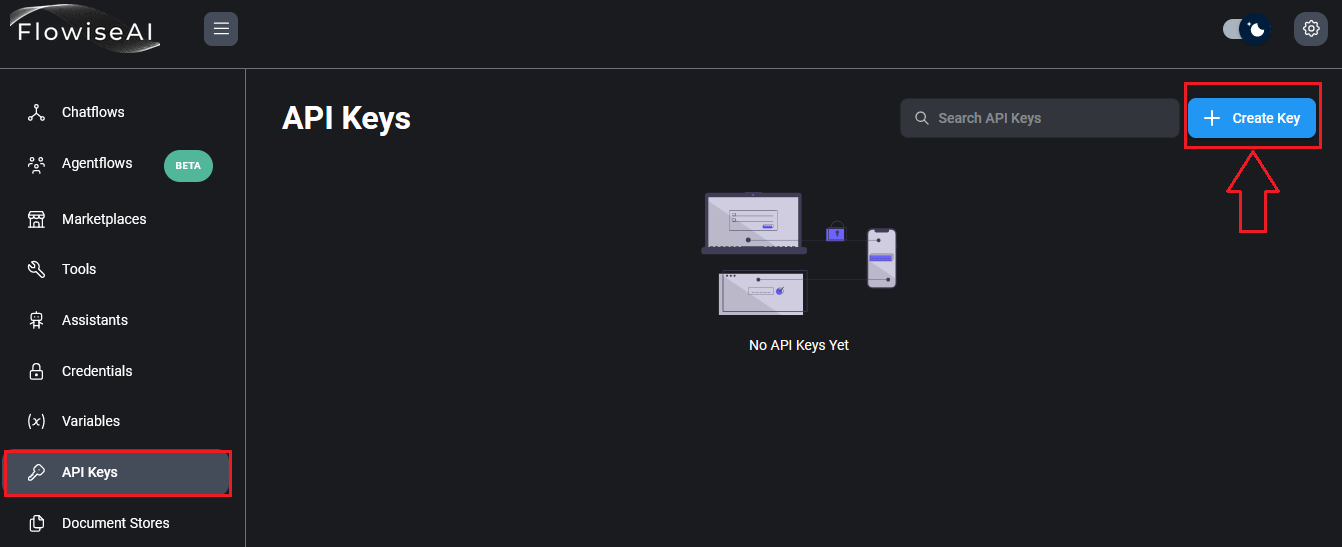
- To add the new chatflow, select chatflow from left pane and click on Add New button.
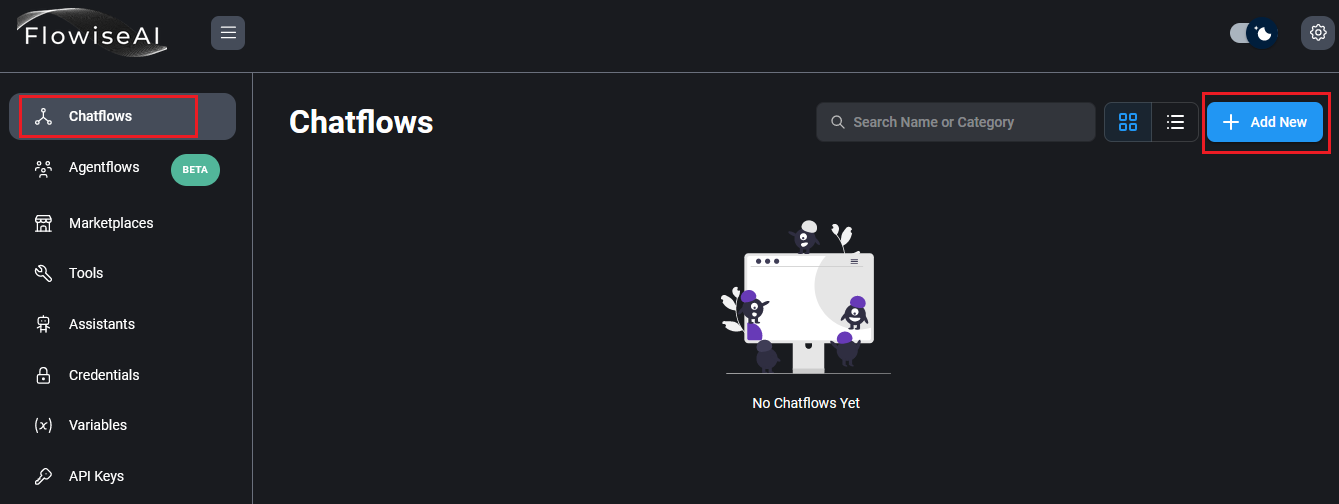
- On this page , you can select from various nodes to work with.
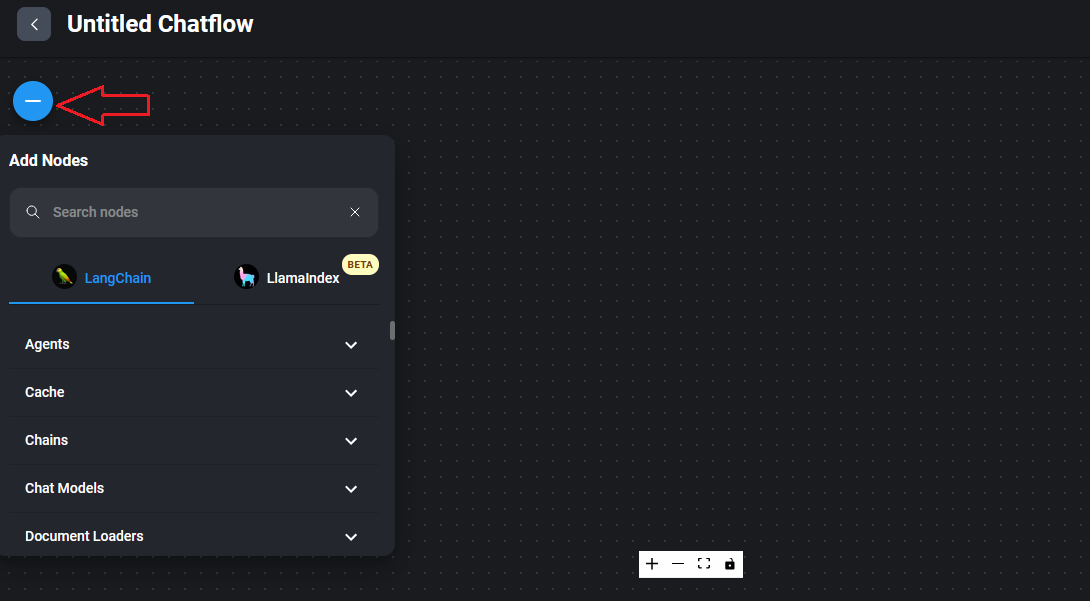
- The Flowise setup file is available at /home/ubuntu/setup/Flowise directory.
